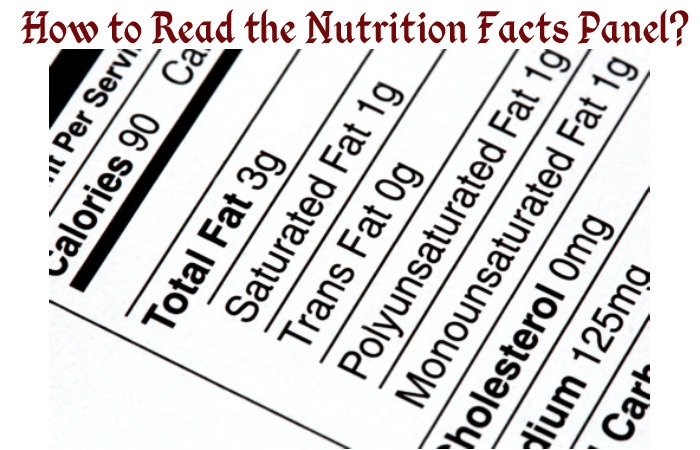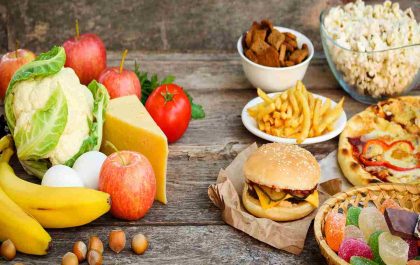Reading Product Labels: The Los Angeles Nutrition Facts panel on food packaging tells you everything you need to know. You need to know what to appear for and interpret the statistics.
Table of Contents
How to Read the Nutrition Facts Panel?
You can start by ignoring the front packaging of a product, which can mislead you with confusing health claims. It only tells you what the manufacturer wants you to know about the safety of a product.
“Multigrain” does not necessarily mean 100% whole wheat. A “low-fat food” doesn’t necessarily mean it’s a heart-healthy choice. “Fresh,” “without additives,” and “natural” are also confusing because they do not necessarily indicate that a product is healthy. Not all of these terms are regulated, so manufacturers can use whatever definition they choose. Ultimately, they don’t necessarily mean the food is better for you.
Nutrition facts on the side or back of a product, understanding can always complicate. It’s easy to accidentally focus on one part of the label, such as sodium, and forget to look at the other parts. Even when you know to go straight to the l panel. When you want to eat for heart strength, you need to consider many things: energy, saturated and trans fats, fiber, sodium, etc. Let SecondsCount guide you through the steps to follow when reading a Nutrition Facts table with your heart health in mind.
- Identify serving size and number of servings per vessel
- Think calories
- Limit These Nutrients
- Get enough of these nutrients
- Understand l. A. Footnote at the bottom of the Nutrition Facts label
- Los Angeles Percentage Daily Value Factor
- Review the ingredient list
1. Recognize Servicing Size of Quantities and Number of Quantities Per Container
The information on the. A. Size of Los Angeles elements and the number of quantities per container is one of the essential belongings to look at, so jump at the top of the Los Angeles nutrition facts table. It tells you how much of the food the other nutritional information applies. It’s not necessarily how much you should be eating. Instead, it is a standardized benchmark, allowing crackers to compare to hackers, for example.
It can be confusing because sometimes the packaging is small and looks like one item, but manufacturers label it as two quantities. For example, suppose the servings per container are two, and the energy is 250 when you eat the entire container. In that case, you must double the calories and everything else on the label to get accurate nutritional information for the amount you have eaten.
2. Think Calories
Next, look at calories, which are essential if you’re trying to lose weight or even maintain weight. While strictly calorie counting isn’t always necessary, some people find it helpful to calculate their estimated calorie needs and then track their daily intake. Food labels can help with this. However, even if you don’t count energy every day, looking at the calories listed on a food item can help determine how often a particular food can fit into your healthy diet.
As a general rule, if energy levels are high, for example, more than half the amount of calories you estimate for the whole day, the food in question is not a good choice regularly.
You can use the General Calorie Guide, defined by l. A. United States Food and Drug Administration (FDA), to help you with your decision making.
3. Limit these Nutrients

When following heart-healthy guidelines, it’s helpful to use the Nutrition Facts table to find information about fat, cholesterol, and sodium in foods. These are nutrients to limit because of their harmful effects on the: A. Arterial anxiety and the risk of heart disease.
- Fat
- Saturated Fat
- Trans Fat
- Cholesterol
- Sodium
4. Get Enough of these Nutrients
Most outstanding Americans do not get enough dietary fiber, vitamin A, vitamin C, calcium, or iron. Among these, dietary fiber is essential for heart health. But while following a heart-healthy diet, you don’t want to overlook other crucial nutrients for overall health. The table of l. A. Nutrition Facts can help you identify foods that contain some of these essential nutrients.
Dietary Fiber – Dietary fiber includes both soluble and insoluble fiber listed in grams. Fiber-rich food defines by l. A. Food and Drug Administration as 5 grams or more per serving. Most people should aim for around 25 grams of fiber per day.
5. Understand the Footer Word Los Angeles at the bottom of the Nutrition Facts Label
The web page footnote in l. A. Bottom portion of the Los Angeles Nutrition Facts panel tells you that “Percent Daily Values base on a 2,000 calorie diet”. This footer is the same on all food products, although it may not always have the numerical details underneath if a food package is too small to fit it all.
Daily Values are the amounts we should aim to consume in a day. Many of them depend on the number of calories we eat daily. Los Angeles health experts have set daily values for certain nutrients, including total fat, saturated fat, cholesterol, sodium, total carbohydrates, dietary fiber, l. A. Vitamin A, vitamin C, calcium, and iron. Each person has different caloric needs, but the label shows two energy levels as an example: 2000 and 2500.
6. Percent Daily Value Factor
The percentage of l. A. Daily Value tells you the portion of a nutrient the food provides. It is based solely on a 2,000-calorie diet. Although not everyone fits a 2000 energy diet, the % Daily Value can help determine if a food component is nutrient-rich or poor.
By looking at the amount, you can tell if the food is getting a lot or a little of each of the nutrients you’re trying to limit (e.g., saturated fat and sodium) or get enough (e.g., dietary fiber and calcium). Note that the %DV column does not correspond vertically to 100%. Instead, each nutrient base on 100% of the daily requirement for that nutrient (for a 2,000 calorie diet).
Quick Guide to DV Percentage
- 5% or less is LOW
- 20% or more is HIGH
7. Review the Ingredient List
The ingredients of a food product list by weight in descending order. This comprehensive list of information is vital for anyone suffering from food allergic reactions. It is also beneficial for determining more nutritional information about a food product:
- If there are more preservatives than identifiable ingredients, a portion of food may be highly processed and therefore less healthy than less processed food.
- If the ache makes l. A. Whole Wheat Flour Th, the ideal
- If a product contains incompletely hydrogenated oil, it contains trans fat despite a label that may state “zero grams” of trans fat.
- If sugar or high fructose corn syrup list before other healthier ingredients, such as culmination, it may be a food high in calories from sugar and low in other nutrients. Other names for sugar include corn syrup, maltose, dextrose, sucrose, honey, and maple syrup.
Also Read: The Best Smart Home Devices
Related posts
Featured Posts
Processed Foods: What is ok and What to Avoid?
Introduction Processed foods get a bad rap as diet wreckers. It’s responsible for rates of obesity, high blood pressure, and…
Best SEO Companies in Dallas – 2023
Introduction If you are looking for the best Dallas SEO companies, the following list of Dallas SEO firms has been…


